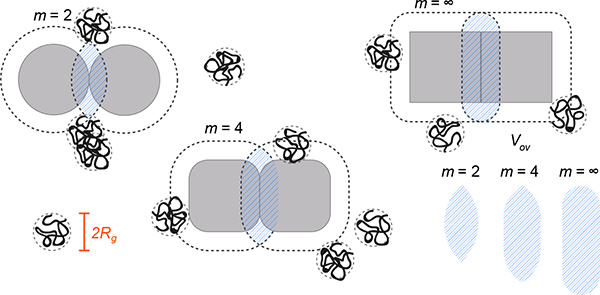EPJ E Highlight - Polymers can fine-tune attractions between suspended nanocubes
- Details
- Published on 19 June 2020

Interactions between hollow silica nanocubes suspended in a solution can be adjusted by varying the concentration of polymer molecules added to the mixture.
Colloids are complex mixtures in which microscopic particles of one substance are suspended evenly throughout another. They can be prepared in many different ways, but to achieve desirable properties in the final mixture, researchers must maintain a delicate control over the interactions which take place between the particles. In new research published in EPJ E, a team led by Remco Tuinier at the Eindhoven University of Technology in the Netherlands demonstrate this level of control for a type of colloid in which the suspended particles take the form of hollow, nanoscale cubes – a case which has only previously been explored through theoretical calculations.
Such varieties of functional colloid can be useful in a range of technologies, including materials which manipulate the paths of light travelling through them, as well as highly sensitive light sensors. Their intricate preparation requirements can be achieved by adding in polymers which don’t stick to the microparticles, creating zones of lower density around them. When these zones overlap, the particles become attracted to each other in characteristic ways. This behaviour can be finely tuned through three different techniques: adding polymer molecules in different concentrations; varying the size difference between particles and polymer molecules; and changing the particle shapes.
For hollow silica nanocubes suspended in a solution containing molecules of polystyrene, Tuinier’s team measured how the scattering of light passing through the mixture was affected by the polymer’s concentration. Together with visual observations, this allowed them to assess the stability of the mixture. Altogether, they found that their experimental results agreed remarkably well with previous theoretical calculations. Their conclusions provide new insights into the diverse physics of colloidal mixtures, and could soon allow for new advances in technologies which sense and manipulate the flow of light.
F. Dekker, Á. González García, A.P. Philipse, R. Tuinier (2020), Phase stability of dispersions of hollow silica nanocubes mediated by non-adsorbing polymers, Eur. Phys. J. E 43:38. DOI 10.1140/epje/i2020-11962-y




